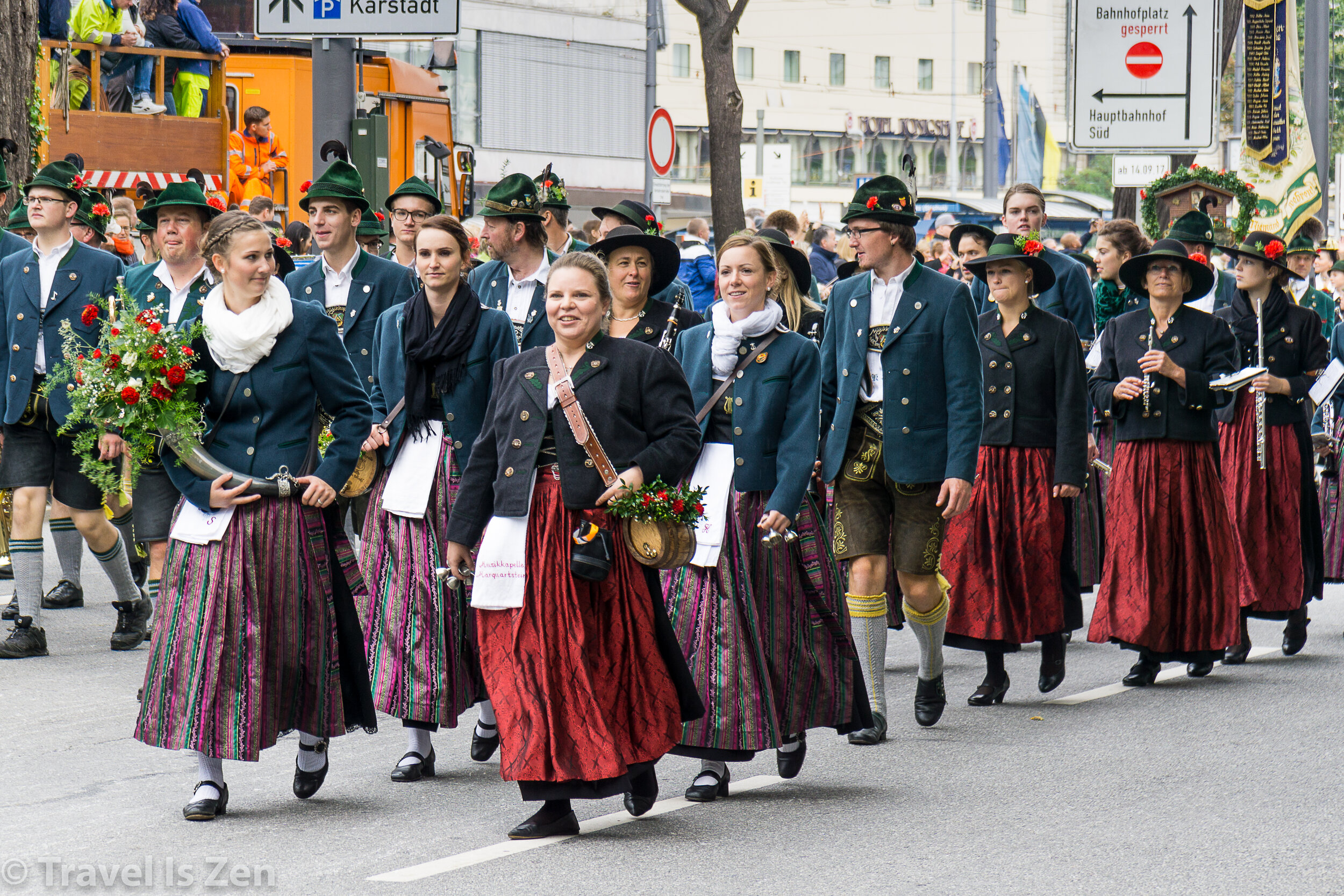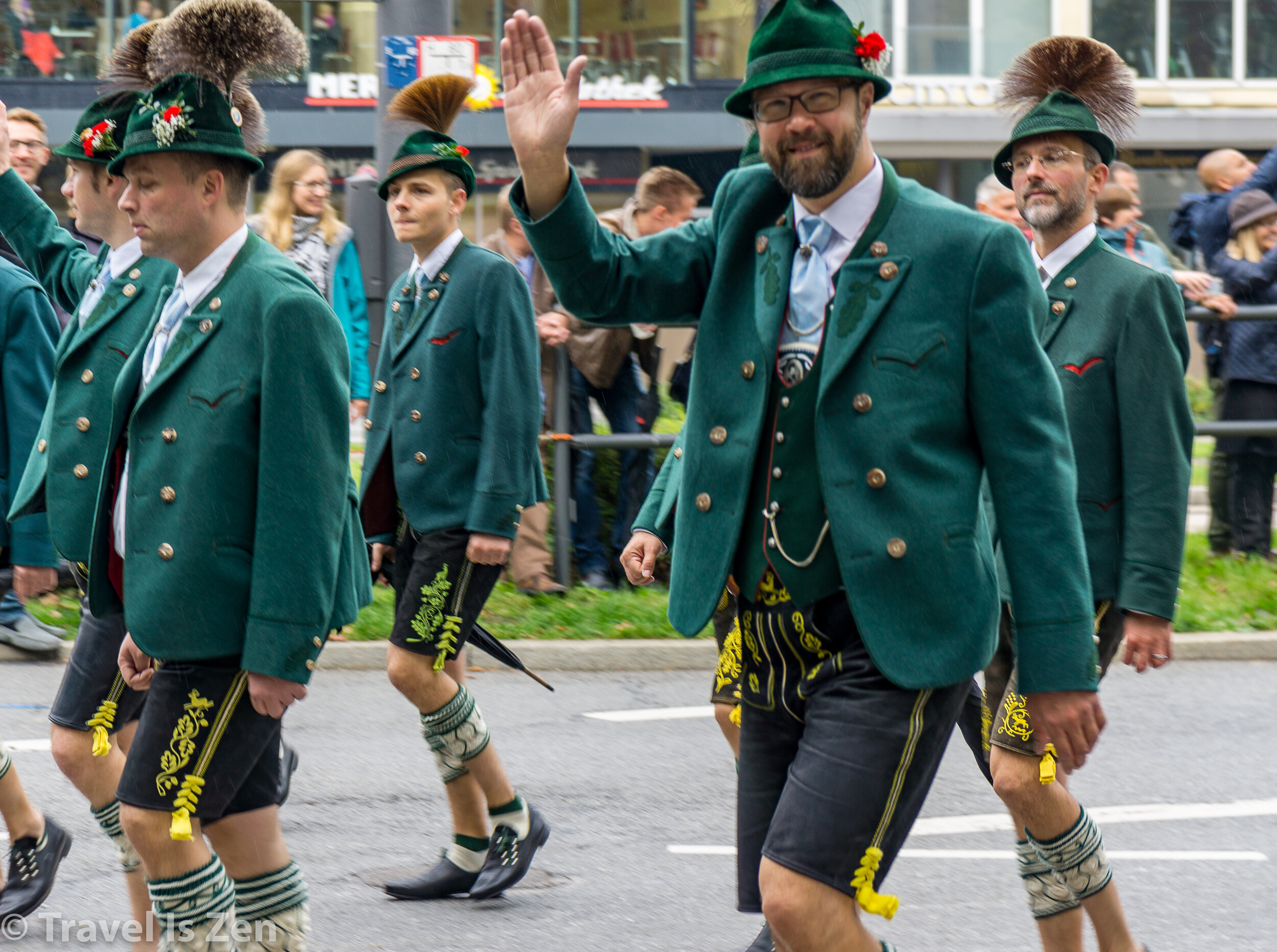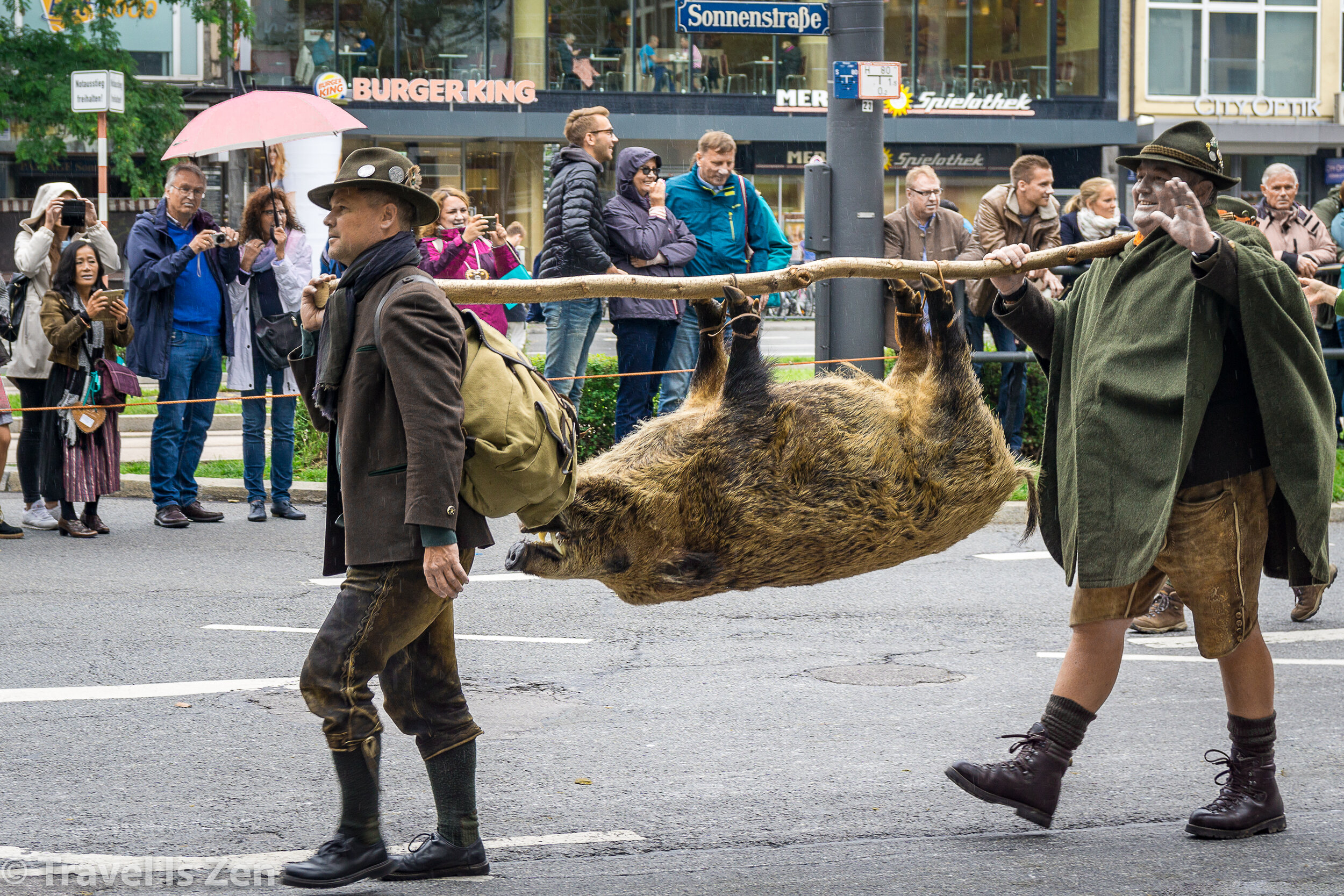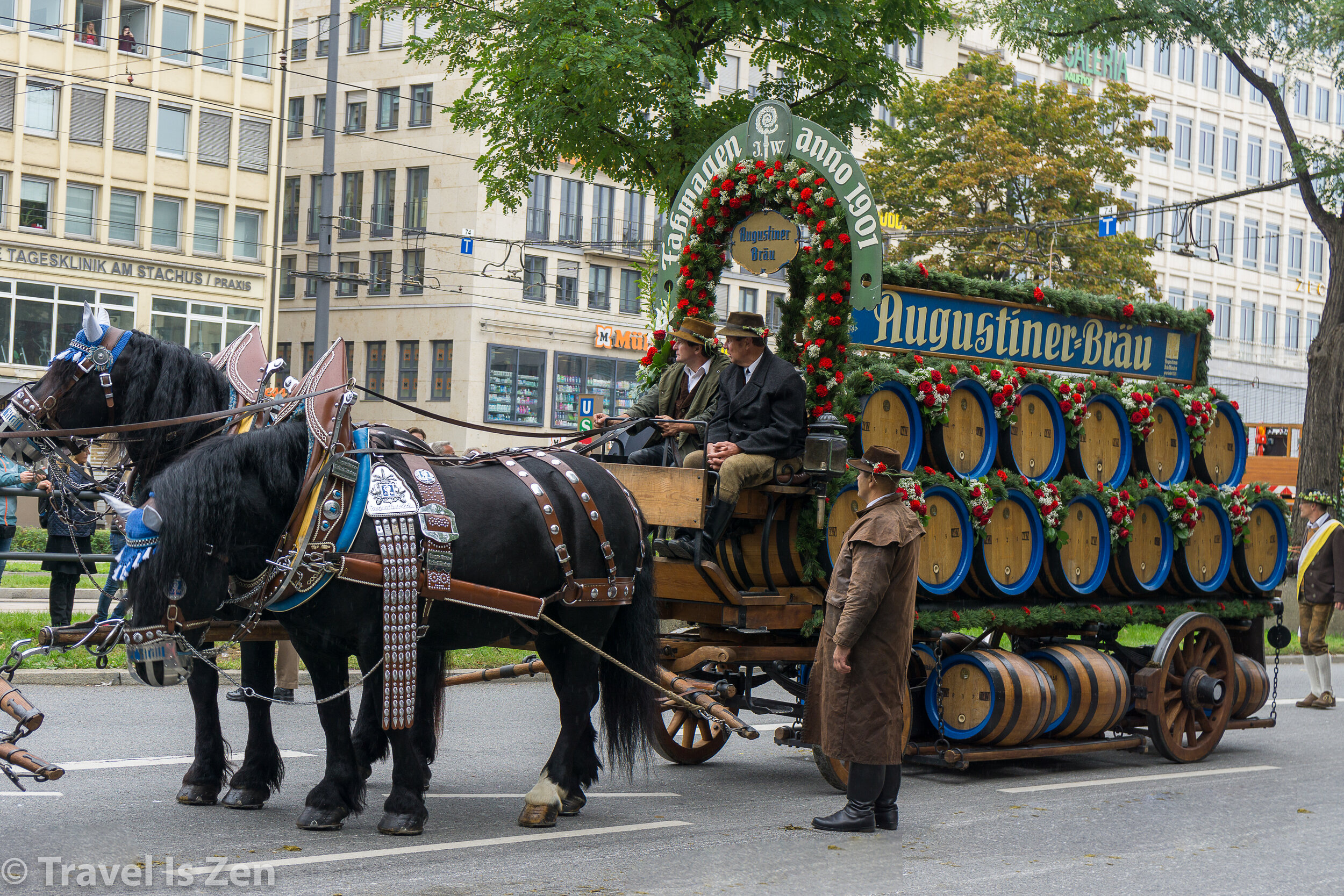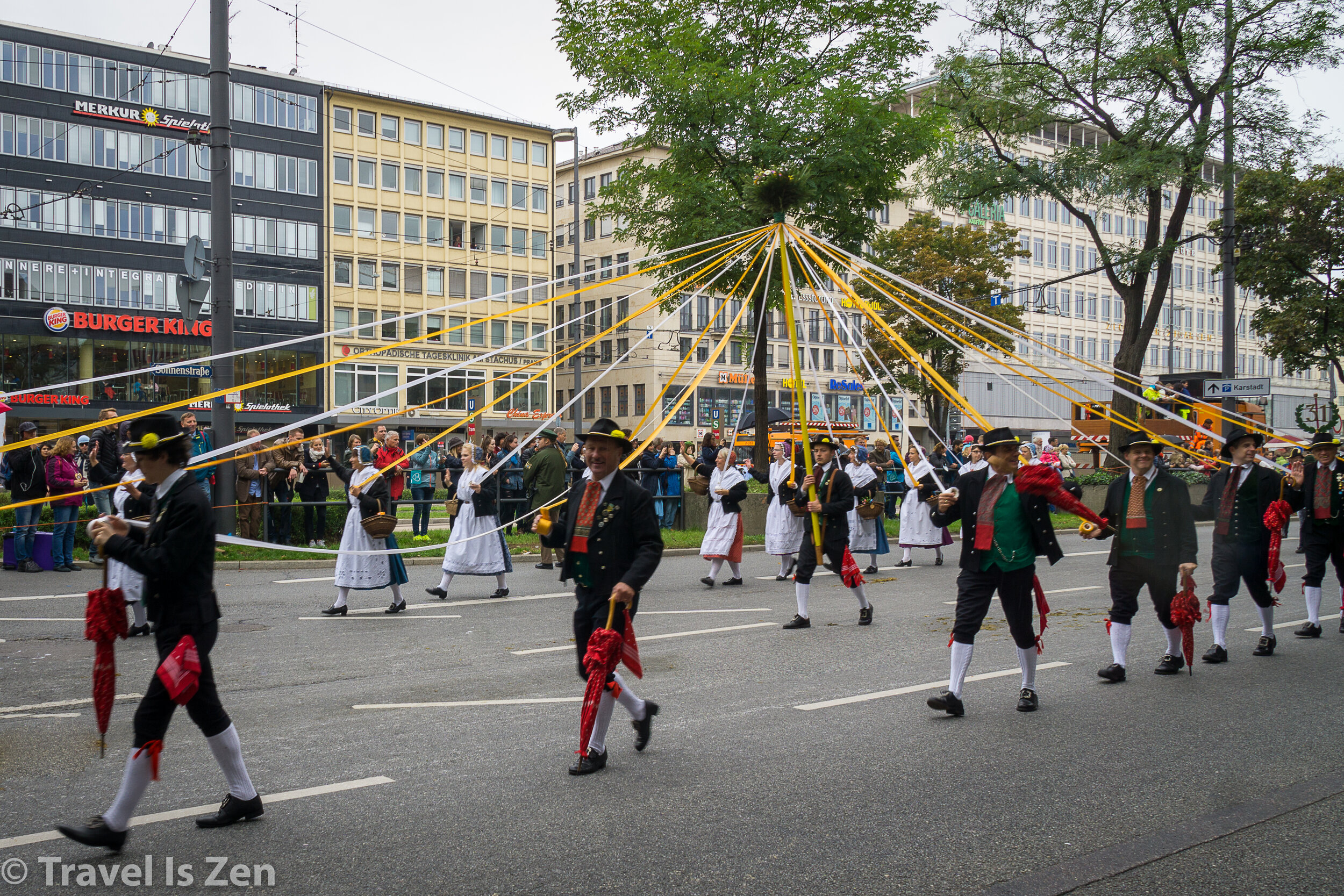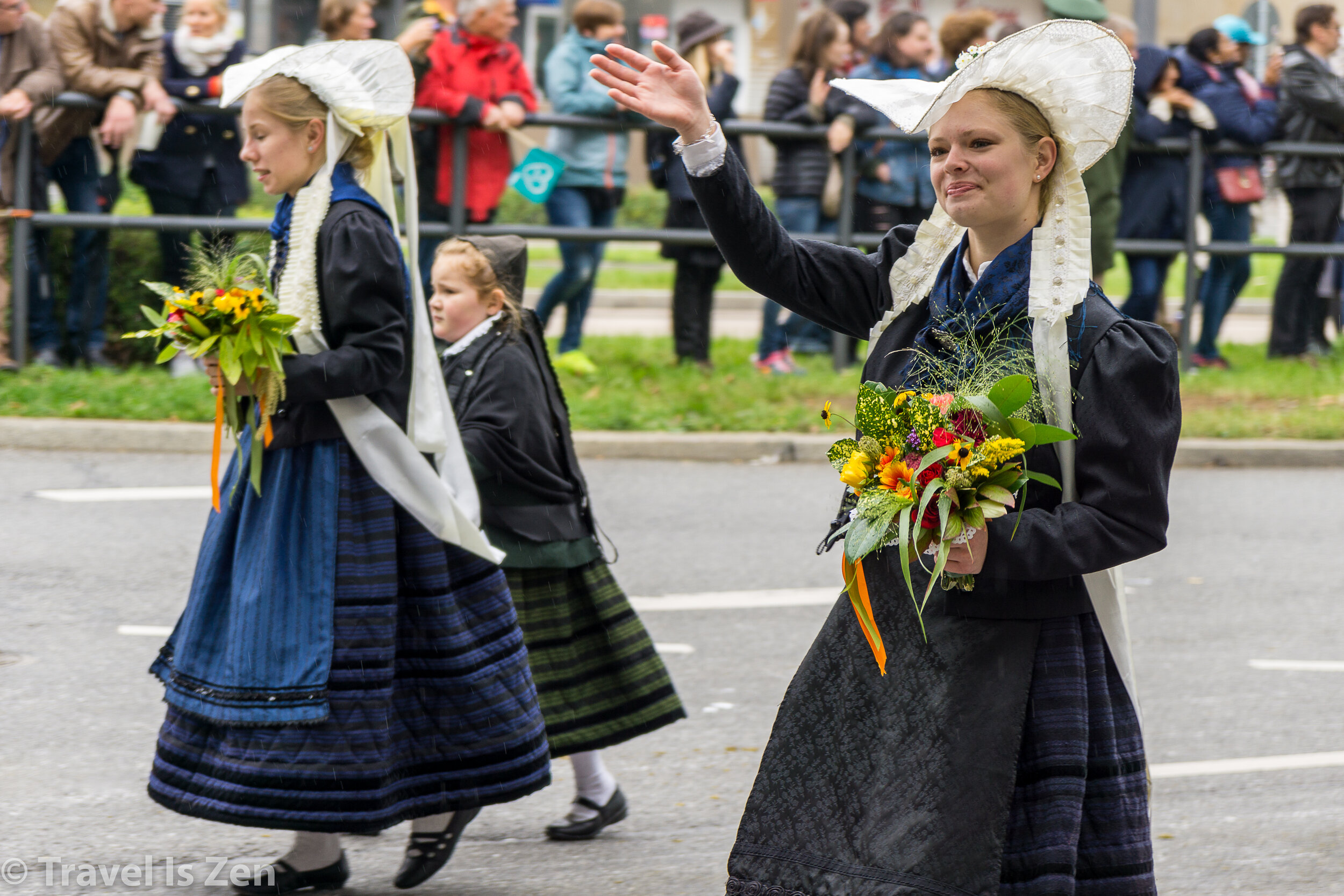Brief History of Oktoberfest in Munich, 1810
City gate entrance to Theresienwiese
Oktoberfest originated in 1810 as a wedding celebration for Prince Ludwig of Bavaria (Bayern) and his bride Princess Therese of Saxony-Hildburghausen. Let’s put this grand party in historical context. Until 1806, Bavaria had been part of the Catholic Holy Roman Empire and had allied with the Austrian House of Habsburg since the mid 1500’s. In 1806, however, the ruler of Bavaria, Maximillian (Ludwig’s father), joined the Confederation of the Rhine in an alliance with France. In exchange for his pledge to remain loyal to Napoleon, Bavaria rose to the status of a formal “kingdom”.
Ludwig’s marriage just four years later was the first royal wedding in the kingdom’s short history and a cause for celebration. A wedding feast and horse race were organized in front of the city gates in a field recently dedicated to the new bride, “Theresienwiese” (Therese’s fields). It was so fun — and profitable for the financiers! — that the city decided to make the festival an annual event. In over 210 years, Oktoberfest has only been cancelled 26 times, with the most recent being 2020 and 2021 due to the pandemic (boooo).
Inside an Oktoberfest tent, which first appeared in 1896
Oktoberfest in Munich actually starts in September, two weeks before the first Sunday in October. In my opinion, opening day is the most authentic and traditional day of the entire event. To get the most out of Oktoberfest, try to be there for the opening day parade, which is a celebration of the micro-cultures within each of Bavaria’s districts. Participants sport their region’s distinct fashion, maypole, major economic product(s), and regional beer producer. The parade marks the official start to Oktoberfest. Locals gather for the spectacle and everyone follows the parade to the ‘Wiesen to tap the kegs and get the party started. Germans are dressed in their finest lederhosen and dirndls to celebrate their heritage. We walked with the crowd and popped into a tent without tickets or a reservation! That’s the beauty of the first day!
While you’re at the event, you’ll notice ladies sporting heart shaped cookies — and vendors hawking them in every storefront. The lebkuchenherz — gingerbread cookie — was popularized as an Oktoberfest icon in the 1950’s by Gustav Teschernich after his heart-shaped chocolates melted in the heat. The cookies have various messages written in frosting, such as “I Love You”, “Princess”, or “I’m single” (subtle!). They are a better souvenir than a cookie you actually want to eat. Foods not to miss at Oktoberfest? The würstl (hotdog), sauerkraut, and brezen (pretzel), of course, along with knödel (dumpling), schweinshaxe (hamhock) and steckerlfisch (grilled fish on a stick). While you stumble around from tent to tent, don’t forget to snap a pic of the other Oktoberfest icon — the Statue of Bavaria, unveiled in 1850 to protect and oversee the event.
A little irony: So, beer-fueled Oktoberfest originated as a celebration for Prince Ludwig’s wedding. Thirty-four years later, in 1834, now King Ludwig attempted to increase the tax on beer. Locals weren’t having it and they staged a riot. Civil peace was restored only after King Ludwig announced a 10% reduction in the price of beer.
Our historical journey continues in Füssen, where we will meet the son and grandson of King Ludwig (hint: you will likely recognize their fairytale castles, Neuschwanstein and Hohenschwanstein).









